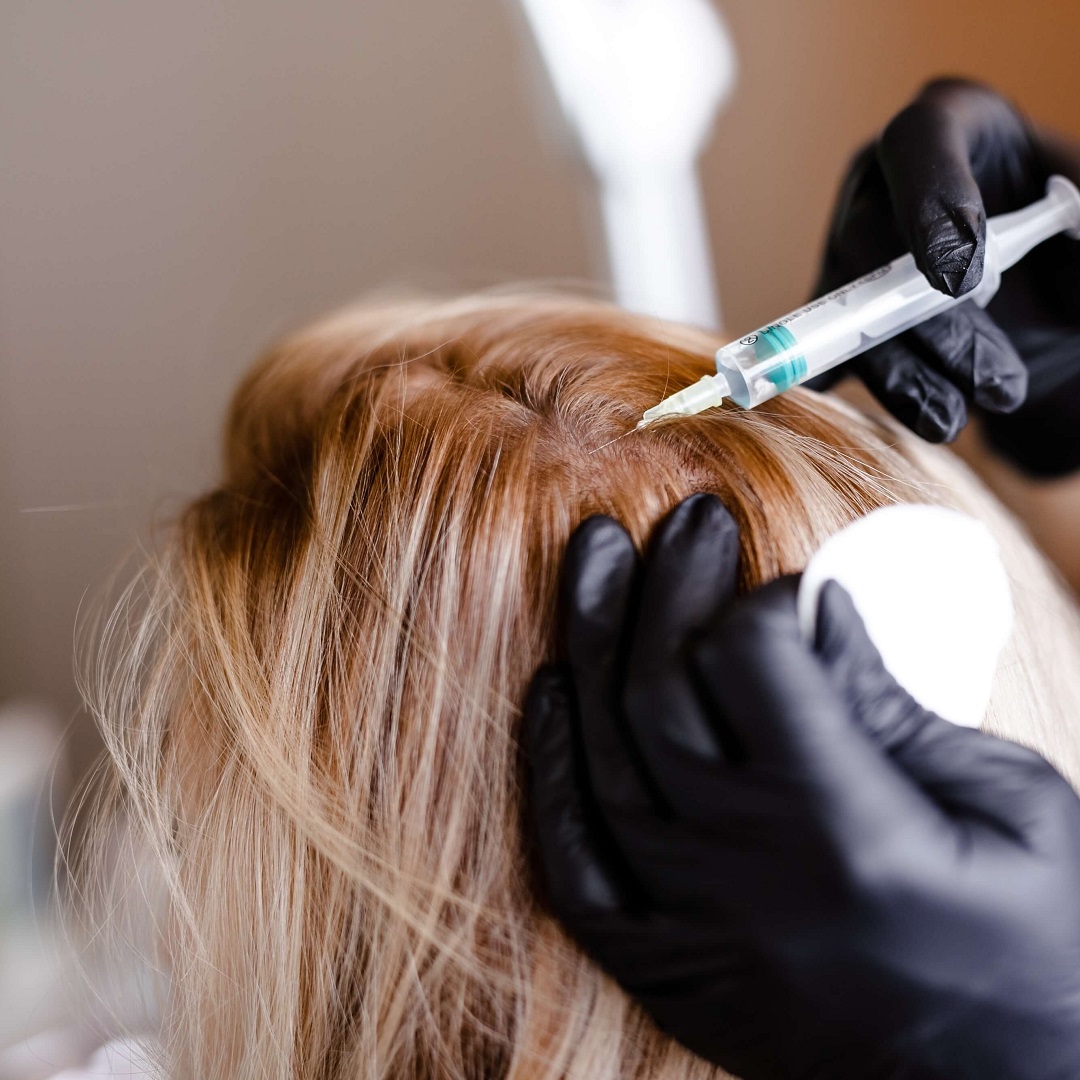
Hair Growth and Loss
Hair grows in cycles, primarily consisting of three phases:
- Anagen (Growth Phase): The active growth phase that lasts 2-7 years, depending on genetics.
- Catagen (Transition Phase): A brief period of two weeks where hair follicles shrink.
- Telogen (Resting Phase): Hair falls out, and new hair begins to grow.
Factors like stress, poor blood circulation, or damage to hair follicles can disrupt this cycle, leading to hair loss. Enter Botox, which is now being explored for its ability to improve scalp health and potentially support hair growth.
How Botox Works for Hair Growth
Botox, scientifically known as Botulinum toxin, is a neurotoxin derived from the bacterium Clostridium botulinum. While its primary function is to relax muscles and reduce wrinkles, Botox’s potential application for hair growth lies in its ability to improve blood flow and reduce scalp tension.
Mechanisms of Botox for Hair Growth:
- Improves Scalp Blood Circulation: Botox relaxes muscles in the scalp, reducing tension and improving blood flow to hair follicles. Enhanced circulation delivers more oxygen and nutrients to follicles, fostering an environment conducive to hair growth.
- Reduces Stress-Induced Hair Loss: Chronic scalp tension is often linked to stress, which can impair hair growth. By relaxing the scalp, Botox helps alleviate this tension, potentially reducing hair fall caused by stress.
- Sebum Regulation: Excess sebum can clog pores, hindering hair growth. Botox may help regulate the production of sebum, creating a healthier scalp environment.
Botox Types for Hair Health
There are two primary types of Botox treatments associated with hair health:
- Scalp Botox: Injected directly into the scalp to target muscle tension and improve blood flow.
- Hair Botox (Topical): A deep conditioning treatment applied to hair strands. Though not technically Botox, it uses keratin, proteins, and vitamins to repair damaged hair, giving it a smoother and healthier appearance.
Benefits of Botox for Hair Growth
Botox, when used for hair restoration, offers several potential advantages:
1. Enhanced Scalp Health
By reducing tension and improving blood flow, Botox creates a fertile environment for hair follicles to thrive. This contributes to stronger, healthier hair over time.
2. Reduced Hair Shedding
Stress and scalp tension are significant contributors to hair fall. Botox helps by relaxing the scalp, thereby reducing the rate of shedding.
3. Healthier Hair Strands
While scalp Botox targets hair growth at the root, hair Botox (the topical version) revitalizes damaged strands, making them appear fuller, shinier, and more robust.
4. Targeted Treatment for Alopecia
Early studies suggest that Botox may help individuals suffering from alopecia—a condition characterized by patchy hair loss.
Scientific Evidence and Studies
While the concept of using Botox for hair growth is relatively new, preliminary studies have shown promising results. For example, a study published in the International Journal of Dermatology examined Botox injections for patients with androgenetic alopecia. Results indicated improved blood flow to the scalp and increased hair density in some participants.
Procedure and Expectations
The Process:
- Botox is injected into targeted areas of the scalp using a fine needle.
- A session typically lasts 30-45 minutes.
Post-Treatment Care:
- Avoid strenuous activities for 24 hours.
- Refrain from washing your hair immediately after the treatment.
Patients generally report improved scalp health and hair quality within a few weeks of treatment.
Potential Side Effects
As with any cosmetic procedure, Botox for hair growth comes with potential risks:
- Temporary Discomfort: Mild pain or swelling at the injection site.
- Headaches: Some individuals may experience temporary headaches post-treatment.
- Allergic Reactions: Rare, but possible.
Always consult a qualified professional to minimize risks and ensure safe administration.
Alternative Treatments to Consider
While Botox offers exciting possibilities, it’s not the only option for addressing hair loss. Alternatives include:
- Minoxidil: A topical treatment proven to stimulate hair growth.
- Platelet-rich plasma (PRP) Therapy: Uses your blood’s growth factors to rejuvenate hair follicles.
- Low-Level Laser Therapy (LLLT): A non-invasive option to stimulate hair regrowth.
- Nutritional Supplements: Biotin, iron, and zinc can support healthy hair growth.
Combining Botox with these treatments under expert guidance may enhance results.
FAQ’s:
Q: Is Botox for hair growth a permanent solution?
A: No, the effects of Botox injections are temporary, typically lasting 3-6 months. Maintenance treatments are required.
Q: Can everyone use Botox for hair growth?
A: Individuals with certain medical conditions or allergies may not be suitable candidates. Always consult with a healthcare provider first.
Q: How soon can I see results?
A: Visible improvements may take 2-4 weeks, with optimal results after multiple sessions.
Final Thoughts
While Botox injections are best known for smoothing wrinkles, its emerging use for promoting hair growth is gaining traction. By improving scalp health, reducing tension, and enhancing blood circulation, Botox holds promise as a supplementary treatment for hair restoration.







